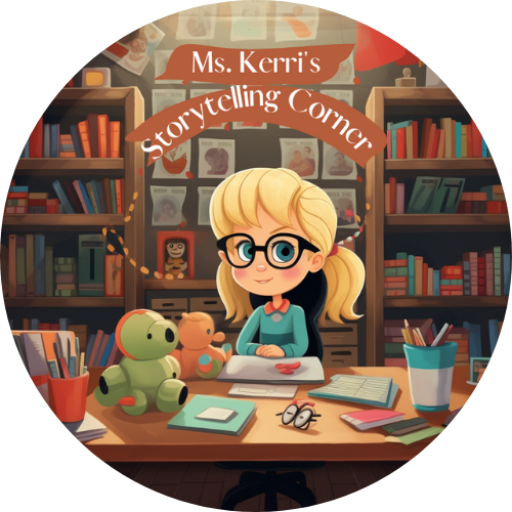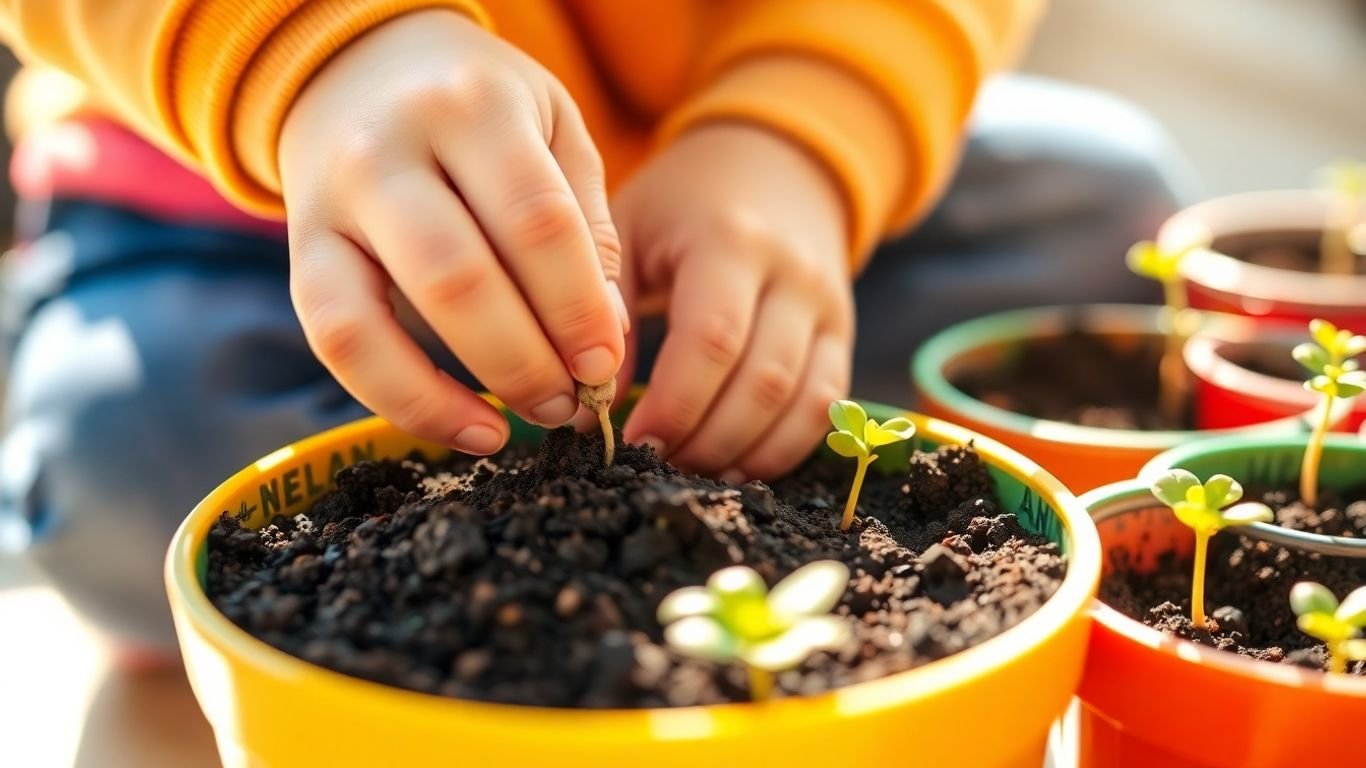Spring is here and it’s the perfect time to get little ones excited about nature and how things grow. Planting seeds with preschoolers is a fantastic way to introduce them to science concepts and the natural world. These DIY kids planters and educational gardening projects are designed to be fun, engaging, and educational, making learning an adventure for everyone involved. Get ready to dig in and explore the wonders of plants!
Key Takeaways
Engage preschoolers in understanding plant life cycles through simple activities like growing seeds in eggshells or using color-by-number printables. These are great classroom planting activities.
Introduce basic STEM concepts for kids with experiments like celery and food coloring to demonstrate capillary action or leaf chromatography. These are excellent hands-on science for toddlers.
Teach children about the different parts of a plant and flower using crafts, worksheets, and hands-on dissection, helping develop fine motor gardening skills.
Explore creative planting projects such as making seed bombs, growing grass heads, or planting seeds directly into a pumpkin. These contribute to developing life skills for preschoolers.
Encourage sensory exploration and observation skills with garden journals, ‘all senses’ activities, and building bug houses.
Exploring Plant Life Cycles

It’s pretty amazing when you think about it – how something as small as a seed can turn into a whole plant! Watching this transformation happen is a fantastic way to introduce preschoolers to the concept of life cycles. It’s not just about planting; it’s about observing, learning, and being patient as nature does its thing. This process can teach kids a lot about how living things grow and change over time.
Eggshell Seed Growing Activity
This is a super simple and engaging way to see seeds sprout. You just need some eggshells (cleaned out, of course!), a bit of soil, and your seeds. Poke a small hole in the bottom of the eggshell for drainage, fill it with soil, and plant your seed. You can even tape the eggshell back together if it breaks. Place them in an egg carton so they stand up. Over the next week or so, kids can peek inside the cracked shells to see the first roots and shoots appear. It’s like a tiny, natural science experiment right in their hands!
Plant Life Cycle Color By Number
For a quieter activity, printables like a plant life cycle color-by-number sheet can be really helpful. These sheets usually show different stages – seed, sprout, seedling, and adult plant – with numbers corresponding to colors. As kids color, they’re visually reinforcing the sequence of growth. It’s a good way to connect the hands-on planting with a more structured learning activity, helping them remember the order of things.
Growing Seeds in Clear Containers
Using clear plastic cups or jars is another excellent method. You can see everything happening from the outside! Start with a layer of damp paper towels or cotton balls at the bottom, place a few seeds on top, and then cover them with another layer. Keep the container slightly open or poke some holes in the lid for air. Watching the roots grow down and the sprout push upwards through the clear material is really captivating for little ones. It makes the whole process visible and easy to track day by day.
Hands-On STEM Activities for Kids
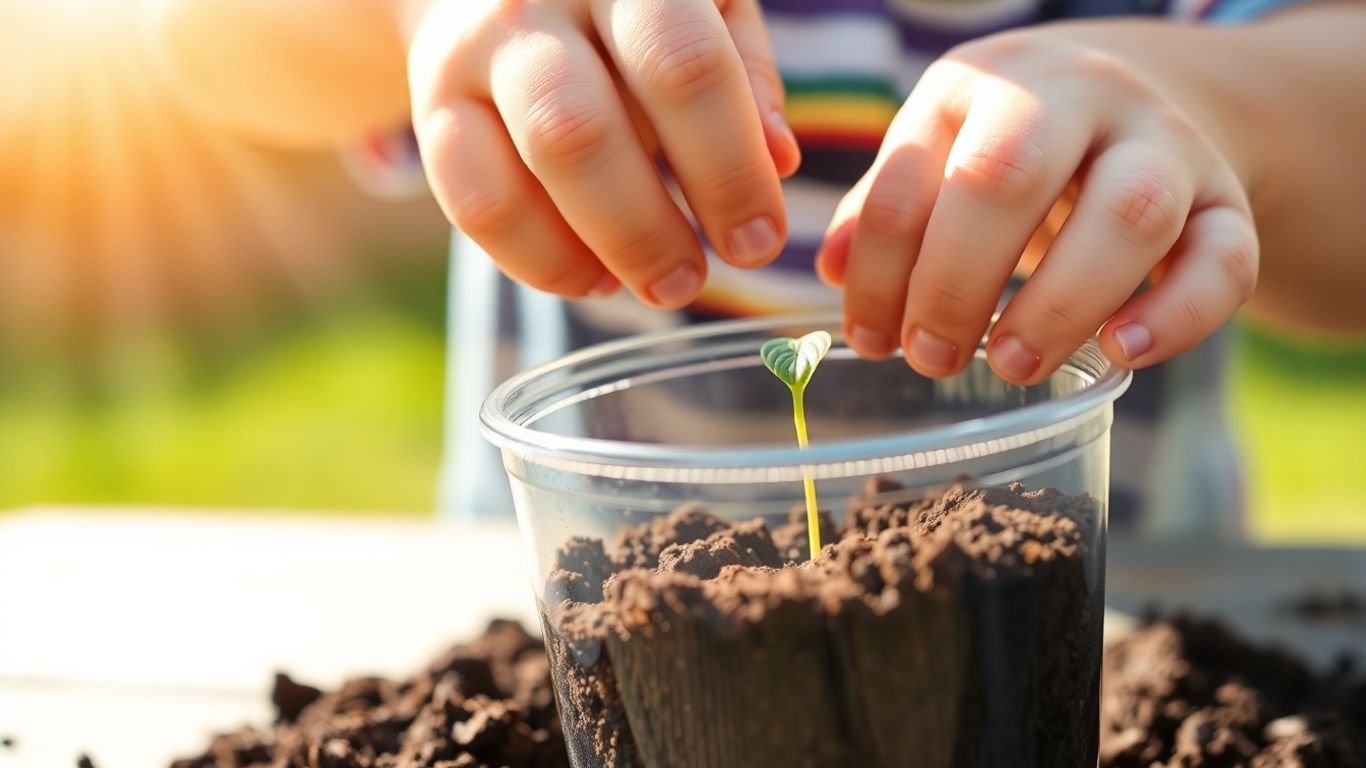
Science, Technology, Engineering, and Math – STEM – might sound a bit grown-up, but it’s really just about exploring how things work. And what better way to do that than with plants? These activities are perfect for curious preschoolers who love to get their hands dirty and ask ‘why?’ These are great examples of hands-on science for toddlers.
Celery and Food Coloring Experiment
This is a classic for a reason! You take a stalk of celery, put it in a glass of water mixed with food coloring, and wait. It’s amazing to see how the colored water travels up the celery stalk, showing kids how plants drink. You can even try different colors in separate glasses to see them mix or stay separate. It’s a simple way to talk about how plants get water to their leaves.
Color Changing Flowers: Capillary Action Experiment
Similar to the celery experiment, this one uses actual flowers, usually white ones like carnations. You split the stem of a white flower and place each half into a different colored water. Over time, the petals will start to show the colors. It’s a really visual way to demonstrate capillary action, which is how plants move water and nutrients from the soil up to their petals. It’s like the flower is drinking a rainbow!
Leaf Chromatography: Discover the Hidden Colors of Leaves
Ever wonder what makes leaves turn those brilliant colors in the fall? This activity helps uncover that secret. You’ll need leaves, rubbing alcohol, and a coffee filter or paper towel. By crushing the leaves and letting the alcohol extract the pigments, you can see the different colors that were hiding in the leaf all along. It’s a neat way to show that leaves aren’t just green; they have a whole spectrum of colors inside them, which is part of how they make food from sunlight.
These experiments are great because they don’t require a lot of fancy supplies. Most of what you need is probably already in your kitchen or craft bin. Plus, they offer a tangible result that preschoolers can see and understand, making the science concepts stick.
Understanding Plant Parts
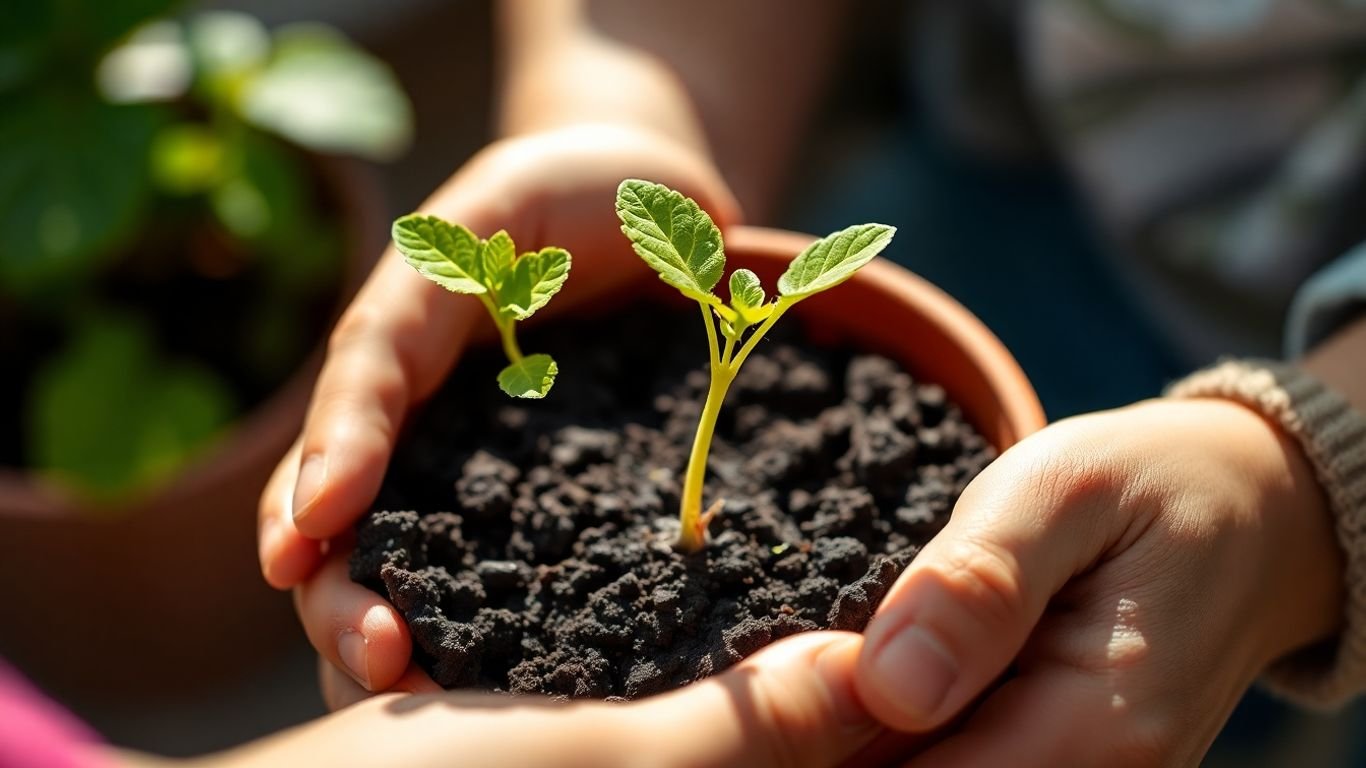
Kids can get a real feel for what makes a plant tick with these hands-on activities. It’s not just about sticking a seed in the dirt and hoping for the best; there’s a whole system at play! These activities help develop fine motor gardening skills.
Parts of a Plant Craft
This is a fantastic way to get little hands busy while learning. You can use construction paper, pipe cleaners, and even real leaves or flower petals if you have them. Start by cutting out shapes for the roots, stem, leaves, and flower. The roots anchor the plant and soak up water, which is pretty important! Then, glue everything onto a larger piece of paper. It’s a simple craft, but it really helps them visualize each component. You can even add labels for extra learning.
Parts of a Flower Worksheet
Sometimes, a good old-fashioned worksheet is just the ticket. We have a free printable diagram that helps children learn to identify and categorize the main parts of a plant, including roots, seeds, flowers, and leaves. It’s a visual tool designed for educational purposes. You can use it as a coloring page too, which always makes learning more fun. It’s a great way to reinforce what they’ve learned from the craft or from looking at real flowers.
Dissect a Flower
This might sound a bit intense, but it’s actually super interesting for preschoolers. Grab a simple flower, like a daisy or a tulip, and gently take it apart. You can use a magnifying glass to get a closer look at the petals, stem, leaves, and the center part. Talk about what each part does. For example, the petals often attract pollinators like bees. It’s a great way to see the intricate design of nature up close. You can even compare different types of flowers to see how their parts differ. It’s a simple activity that can spark a lot of curiosity about the natural world around us.
Creative Seed Planting Projects

Getting kids involved in planting seeds can be a really rewarding experience, and there are some super fun ways to do it. These projects are all about making the process engaging and memorable for little ones. These are excellent DIY kids planters and contribute to developing life skills for preschoolers.
Seed Bombs: Planting with Recycled Paper
Seed bombs are a fantastic way to introduce kids to planting, especially if you have a bit of outdoor space. You basically mix wildflower seeds with some compost and clay, then roll them into little balls. The cool part is using recycled paper pulp in the mix! It’s a great way to teach kids about recycling and how seeds spread. Once they’re made, you can toss them into a garden bed or even a vacant lot, and nature does the rest. It’s like magic for kids to see plants pop up later from something they created.
Growing Grass Heads in a Cup
This is always a hit. You take a small cup, maybe decorate it to look like a face, and then fill it with soil. Kids plant grass seeds on top, and with regular watering, the grass starts to grow. Before you know it, you’ve got a funny little grass head that you can even give haircuts to! It’s a simple way to show how quickly some plants can grow and is a great way to practice fine motor skills when they’re snipping the grass.
Plant Pumpkin Seeds in a Pumpkin
This project is perfect for the fall season. You can carve out a small pumpkin, scoop out the insides, and then plant pumpkin seeds directly into the pumpkin itself. It’s a bit messy, but kids love it. You’ll need to keep the soil moist and place it in a sunny spot. Watching the seeds sprout and grow right out of the pumpkin is a unique experience. It’s a great way to connect planting with the natural cycle of the pumpkin. You can find lots of ideas for plant activities for preschoolers here.
Sensory and Observational Garden Fun
Gardening with little ones isn’t just about growing plants; it’s a fantastic way to engage all their senses and encourage close observation. When kids can touch, smell, see, and even taste what they’re growing, the learning really sticks. It’s about connecting with nature in a very real, hands-on way.
All Senses Exercise
This activity is all about letting children explore the garden using every sense they have. You can put up a little sign that says “Please Touch Plants” to give them permission to feel the different textures – the fuzzy leaves of a lamb’s ear, the smooth petals of a rose, or the rough bark of a tree. Ask them what sounds they hear: the buzzing of bees, the rustling of leaves, or birds chirping. If you have fragrant herbs like mint or basil, encourage them to gently smell and even taste the edible ones. It’s amazing what they notice when they’re really paying attention. This is a great way to help them connect with their surroundings.
Garden Journal
Keeping a garden journal is a wonderful way to track the progress of your plants and your child’s observations. It doesn’t need to be fancy. A simple notebook and some crayons or colored pencils are all you need. You can guide your child to draw what they see each week: the tiny sprout, the first leaves, or maybe a visiting ladybug. You can also write down what they say about the plants. This helps develop their observational skills and creates a lovely record of their gardening journey.
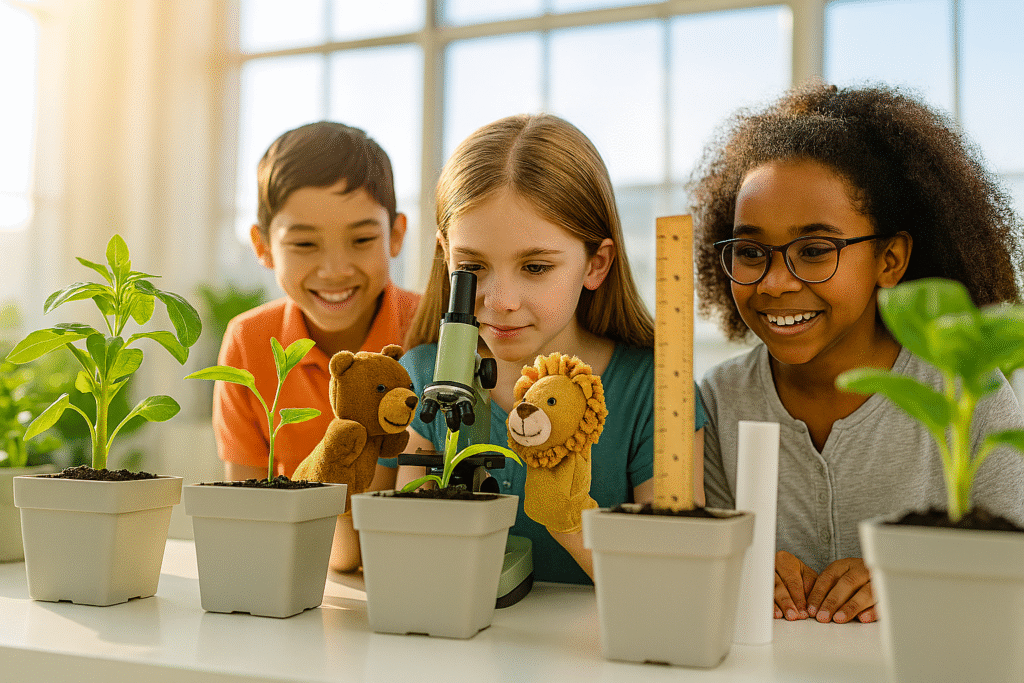
Here’s a simple way to structure journal entries:
Date: Record the date of observation.
Drawing: Have your child draw what the plant looks like today.
Notes: Write down anything your child says about the plant or what they notice.
This process helps children develop patience and a sense of accomplishment as they see their drawings and notes change over time, reflecting the plant’s growth. It’s a tangible way to see the results of their care and attention.
Make Bug Houses
Children are often fascinated by the small creatures that live in the garden. Making a bug house is a fun project that allows them to create a safe habitat for insects and then observe them up close. You can use an empty plastic container, like a yogurt tub or a small plastic bottle. Make sure to poke small holes in the lid for air circulation. Then, fill the house with natural materials like twigs, leaves, and grass. You can even add a few small pieces of fruit for a treat. Place the bug house in a quiet spot in the garden and wait for visitors! It’s a great way to learn about the different kinds of bugs that help our gardens thrive.
Easy Plants to Grow with Little Learners
When you’re planting with preschoolers, picking the right seeds makes all the difference. You want things that sprout relatively quickly so the kids don’t lose interest. Plus, it’s a great way to introduce them to the idea that plants grow from tiny seeds. These are great educational gardening projects.
Starting with easy-to-grow plants ensures success and keeps those little hands eager to plant more. It’s all about building confidence and a love for nature from the get-go. We’ve found that certain plants are just more forgiving and faster to show results, which is perfect for short attention spans.
Here are some of our favorites:
Lettuce: This leafy green is super fast. You can often see sprouts in just 5-10 days. Plus, you can even regrow lettuce from scraps in water, which is a fun trick to show them!
Beans: Kids love watching beans sprout. They usually pop up within a week to ten days. They grow pretty tall, too, which is exciting.
Radishes: These root vegetables are quick growers, often sprouting in 3-7 days. They’re also a good way to talk about what grows underground.
Sunflowers: While they take a bit longer to bloom into big flowers, the seeds themselves sprout fairly quickly, usually within a week to ten days. The sheer size they can get to is always a hit.
Choosing the right seeds is key to a positive first gardening experience for young children. Fast germination and visible growth are your best friends here. It’s about creating those ‘wow’ moments that spark curiosity about the natural world.
It’s also helpful to have a few tips handy for when things don’t go exactly as planned. Sometimes seeds don’t sprout, or plants get a little leggy. If seeds aren’t sprouting, make sure they’re in a warm spot. If plants look weak and stretched out, they probably need more light. You can find more tips on plant STEM activities to help troubleshoot common issues.
Wrapping Up Our Planting Adventure
So there you have it! Getting little ones involved with seeds and plants is more than just a fun way to pass the time. It really helps them connect with nature and learn how things grow. From watching tiny seeds sprout in eggshells to dissecting flowers and even making their own seed bombs, these activities give preschoolers a hands-on look at the natural world. It’s a great way to spark their curiosity and teach them a thing or two about patience and care. Happy planting!

Frequently Asked Questions
What are the easiest plants for preschoolers to grow?
Some of the simplest plants for young children to grow include lettuce, beans, peas, radishes, sunflowers, and marigolds. These seeds are generally easy to handle and sprout quickly, which helps keep little ones engaged and excited about watching their plants grow.
How can I teach preschoolers about the plant life cycle?
You can teach the plant life cycle through fun activities like growing seeds in eggshells, where kids can watch the stages of growth. Using coloring pages that show the different steps, or growing seeds in clear containers so they can see the roots and stem develop, are also great visual aids.
What are some simple science experiments related to plants for preschoolers?
A classic experiment is the celery and food coloring test, where celery stalks in colored water show how plants drink. Another is the color-changing flowers experiment, which uses the same idea to make white flowers change color. Leaf chromatography is also fascinating, revealing hidden colors in leaves.
How can I make learning about plant parts fun for preschoolers?
Hands-on crafts are perfect for this! You can create a ‘Parts of a Plant’ craft where kids assemble different plant sections. Dissecting a real flower allows them to see and touch each part, like petals and stems. Simple worksheets can also help them identify and color the different components.
What are some creative seed planting projects for preschoolers?
Creative projects include making ‘seed bombs’ with recycled paper and seeds, which can then be planted. Growing ‘grass heads’ in cups where kids can give them haircuts as the grass grows is also a big hit. Planting pumpkin seeds directly into a pumpkin is another exciting and messy option.
How can I encourage preschoolers to observe and interact with plants?
Encourage sensory exploration by having them touch different plant textures and smell fragrant herbs. Keeping a garden journal where they can draw what they see helps them track growth and notice details. Creating bug houses also invites them to observe the small creatures that live in gardens.


Ms. Kerri’s Corner provides a exciting virtual space for preschool learning. Through a variety of engaging activities, she exposes young minds to early math, literacy, science and social-emotional skills in a developmentally appropriate way. Centers for blocks, art, books and music allow children to explore hands-on learning at their own pace. Guided lessons subtly introduce number sense, letter sounds and narrative thinking. Careful observation gives insight into each child’s progress across domains. Viewers are also invited to participate, reinforcing that their ideas are valued. By making learning fun yet purposeful, Ms. Kerri lays the groundwork for future academic success while fostering creativity and imagination. Her program offers preschoolers valuable screen-based learning experiences.
